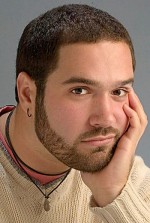Column Name
Title
Tonight in New York, theater capital of the country (arguably of the world), if you wanted to catch a play or musical, you’d have 93 professional productions to choose from (according to the Theater Development Fund listings). Now, if you wanted to catch a play or musical written by a woman, those options quickly dwindle to less than 10. That’s out of93. Now, I’m no big-city mathematician, but that’s less than 11 percent, and if the last New York census was right, and the city’s population really is 53 percent female, that’s a significant chunk of audience being underrepresented in terms of gender. In an age of low ticket sales, maybe some of New York’s most prominent stages should perk up their ears and try something a little “drastic”: producing more female writers.
Body
In November of last year, playwrights Sarah Schulman and Theresa Rebeck organized a meeting at New Dramatists in Midtown Manhattan to discuss this very issue. The figures they presented were unsettling: of the 50 plays being produced by major theater companies in the 2008-09 season (the Public, Atlantic, Playwrights Horizons, etc.), only 20 percent were written by women, and the tally would read as beyond ludicrous if they had included the many theaters that produce more than one “classical” piece per season (works almost exclusively written by the Heavy-Hitter Boys Club of classical playwrights: Shaw, Shakespeare, Molière, among other dead white guys).
If you’re one of the suits on Mad Men, you might be happy to hear there will be more Rockettes in miniskirts doing kick-lines at Radio City next Christmas than female playwrights produced on major New York stages in the last three years. If you’re like me, not only is that infuriating, it makes you terrified at the prospect of having a daughter anytime this century.
But wait, there might be hope. Let’s not forget that Schulman and Rebeck’s figures mostly consider brand-new plays. What about that third category, not new or ancient: the “revival”?
Even if you wanted to make the bogus claim that women just happen not to be writing new plays, a glance at the straight-play revival market seems to favor the Boys Club as well, with David Mamet’s Speed-the-Plow and Peter Schaffer’s Equus in high-profile Broadway productions leading the way. (And both of these scripts feature female roles that are—at best—supporting characters.)
Caryl Churchill, Maria Irene Fornes, Suzan-Lori Parks, and Juilliard’s own Marsha Norman are all Obie or Pulitzer Prize-winning playwrights whose work has changed the global theatrical landscape—but Broadway producers felt the need to mount two productions of Mamet plays this season? (The second was a production of the three-man playAmerican Buffalo, which, surprisingly, was also directed and designed entirely by men.)
Where’s the revival of Caryl Churchill’s Cloud Nine? Where’s Fornes’s Mud?
We may have fooled ourselves into thinking there’s less sexism in the arts than there was a hundred years ago, but the reality is we’ve got a long way to go.
But what can we do to change that? I’m no producer-type, and my guess is, neither are you.
The only way to get these theaters to produce more female playwrights is to increase the demand for female playwrights. If we make it a point to see more plays by women, theaters will just have to produce more plays by women. By no means am I suggesting we boycott Molière because he had a Y chromosome; what I’m suggesting is box-office economics, and if it worked for the Saw movies (one financially successful horror flick that spawned 36,000 sequels), you better believe it’ll work for female playwrights.
I’ll even do some of the Google-work for you. Sheila Callaghan’s That Pretty Pretty; Or, The Rape Play runs at Rattlestick Theater Company until March 15. If that’s too soon, Christina Anderson’s Inked Baby at Playwrights Horizons closes April 5.
Knock ’em dead, ladies.





